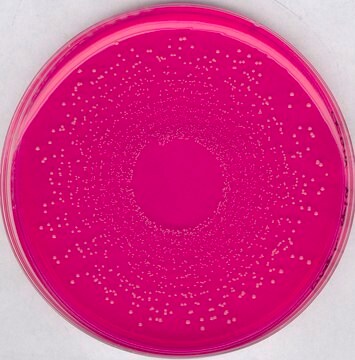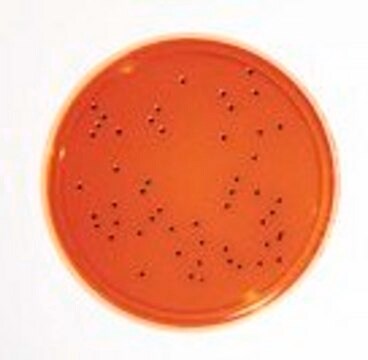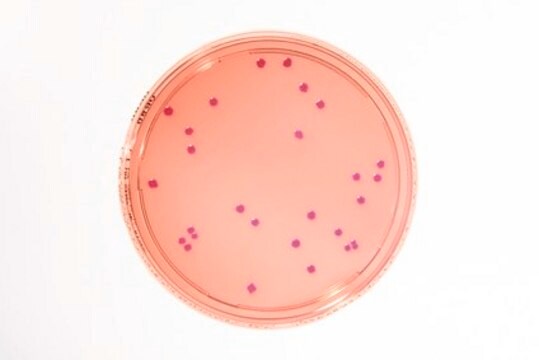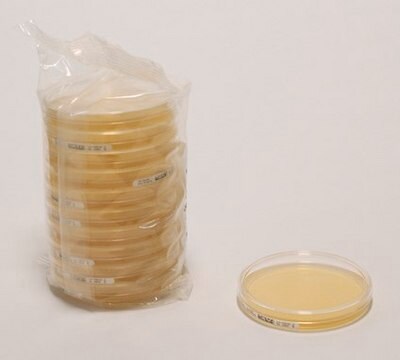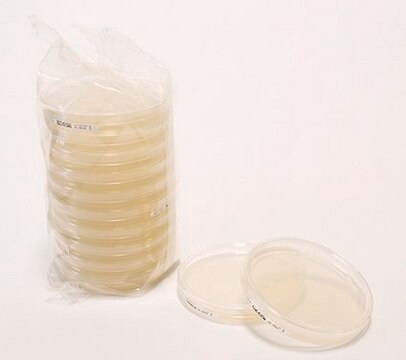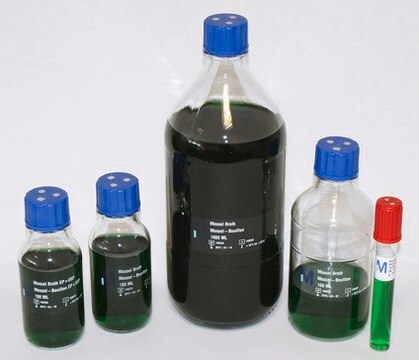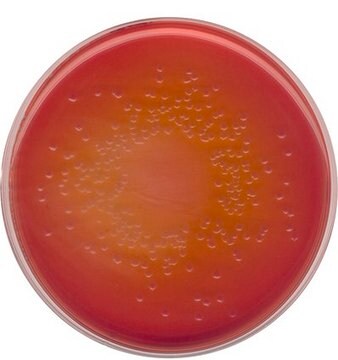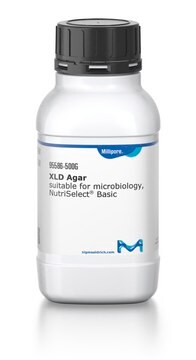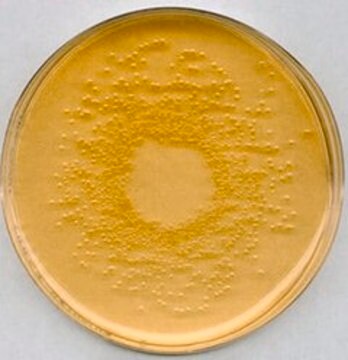1.46023
HEIMPLATE Mannitol Salt Agar
Heimplate, plate diam. 90 mm, ICR Settle plate for long incubation in non-sterile pharmaceuticals -, for Staphylococcus spp.
Sinónimos:
MSA, Chapman Medium
About This Item
Productos recomendados
agency
EP
JP
USP
Quality Level
sterility
sterile
form
plate (ready-to-use)
feature
ready-to-use
ICR Settle plate for long incubation in non-sterile pharmaceuticals -
packaging
pack of 20-120 plates
manufacturer/tradename
Heimplate
technique(s)
microbiological culture: suitable
plate diam.
90 mm
plate filling volume
30 mL
pH
7.4 ( in H2O)
application(s)
microbiology
pharmaceutical
surface monitoring
storage temp.
15-25°C
suitability
Staphylococcus spp.
General description
Application
Storage Class
11 - Combustible Solids
wgk_germany
WGK 1
Certificados de análisis (COA)
Busque Certificados de análisis (COA) introduciendo el número de lote del producto. Los números de lote se encuentran en la etiqueta del producto después de las palabras «Lot» o «Batch»
¿Ya tiene este producto?
Encuentre la documentación para los productos que ha comprado recientemente en la Biblioteca de documentos.
Los clientes también vieron
Artículos
Culture Media for Compendial Methods
Nuestro equipo de científicos tiene experiencia en todas las áreas de investigación: Ciencias de la vida, Ciencia de los materiales, Síntesis química, Cromatografía, Analítica y muchas otras.
Póngase en contacto con el Servicio técnico